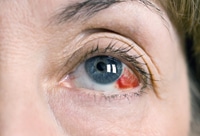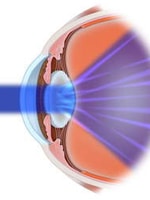Cornea Diseases
The cornea is a thin, clear, spherical layer of tissue on the surface of the eye that provides a window for light to pass through. In a healthy eye, the cornea bends or refracts light rays so they focus precisely on the retina in the back of the eye.

There are many diseases that can affect the cornea, causing pain or loss of vision. Disease, infection or injury can cause the cornea to swell (called "edema") or degrade (become cloudy and reduce vision). Common diseases and disorders that affect the cornea include:
- Allergies
- Bullous Keratopathy
- Conjunctivitis ("Pink Eye")
- Dry Eye
- Corneal Dystrophies including Fuchs' Dystrophy and Lattice Dystrophy
- Glaucoma (High Eye Pressure)
- Infections
- Keratitis (Viral Inflammation)
- Keratoconus
- Ocular Herpes
- Pterygium
- Shingles (Herpes Zoster)
- Stevens-Johnson Syndrome
Treatment for corneal disease can take many forms, depending on the underlying problem as well as the patient's preferences. Some conditions resolve on their own and many can be treated with medication. If the cornea is severely damaged or if there is a risk of blindness, a corneal transplant may be recommended to preserve vision.
Cornea Transplant
The cornea is the clear covering of the front of the eye which bends, or refracts, light rays as they enter the eye. For clear vision to occur, the cornea must have the correct shape and clarity to focus incoming light rays precisely on the retina at the back of the eye. When the cornea becomes cloudy or misshapen from injury, infection or disease, transplantation may be recommended to replace it.

Corneal transplants are usually performed with local anesthesia so there is no pain. During the procedure, the cornea is replaced with one from a human donor. The new cornea carries little risk of rejection and can last for many years.
To learn more about Cornea treatments provided at our practice, please call us today to schedule an appointment.
